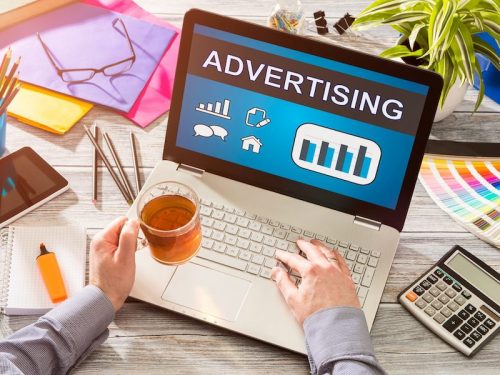
If the industry continues to collaborate to make automated trading accountable and more transparent, all parties will be able to operate confidently, writes Clementina Piazza
“Programmatic buying is the gluten of advertising” has been one of the most eloquent catchphrases on the topic. Back in 2014, the astute comment came from no less than Jimmy Kimmel, at the annual ABC Upfronts event in New York.
For those unfamiliar, or for the millennials out there fortunate (or not) to be born and raised in a digital-only environment, an Upfront is a gathering hosted by US television networks with the aim of selling as much of their media inventory as possible, via up-front deals, showcasing their primetime schedules and new program launches. In other words, one of the most important dates in the global media calendar.
Four years on, and with programmatic set to account for almost 85% of total ad spend in the UK alone, more than ever programmatic has become “the gluten of advertising.” Everyone knows about it, but very few know what it actually entails and an increasing number of people believe it is innately bad.
Firstly, let’s take a step back. According to the IAB’s DDSG definition (Data and Display Steering Group), programmatic is “the use of automation in the buying and selling of media.” “Automation” needs focusing on in order to understand the implications of programmatic buying.
Automation brings the promise of efficiency, however it’s too often used as a direct synonym for it. Automation is generally considered as providing added value as it gives the ability to do more with less time and resources, making it a core component of cost-efficiency.
This is where I believe the industry has inadvertently tricked itself. In the world today, the concept of getting more for less is also associated with “cheap” or “low quality.” The same applies to programmatic in the advertising industry: the blending of “efficiency” with “cheap” has meant that they have become interchangeable.
Don’t get me wrong, this is not simply a matter of semantics. To fully understand the confusion, we need to revisit why programmatic began or, in other words, why the digital advertising ecosystem found itself in desperate need for automation.
When the first desktop banner was delivered back in 1994, the deployment of digital advertising campaigns was akin to offline media. Between 1994 and 2007, three major factors drastically changed the way advertising was being made available and delivered on the internet: the enormous increase in the number of websites, the commoditisation of internet usage brought about by smartphones, and then the subsequent skyrocketing of users accessing the medium – doubling daily usage in just a handful of years.
The internet quickly turned from a marginal platform to the channel where increasing numbers were spending the majority of their waking hours, across a multitude of content. Literally speaking, it was a lot to handle, and as we have seen in other sectors, machines rather than humans were most apt to tackle the challenge. The use of ad servers initially simplified the delivery of digital advertising, and thanks to search engines the web was indexed and categorised as the number of available pages increased.
The quantity of available inventory was growing at a quicker rate than advertisers could handle and whichever technology subsequently entered the ecosystem was developed around two core objectives: effectively reaching the many consumers browsing the internet, and/or how to monetise inventory with efficacy and efficiency. The dramatic increase in scale needed to be tamed in order to be successfully turned into a sizeable opportunity.
Premium inventory continued to be transacted upon directly with a publisher – mostly through human negotiation – with support from automated technology. The remaining inventory was being supplied via ad networks, which categorised inventory for buyers. This categorisation of context and user-base would then go on to set the tone for a future of people-based marketing.
With many intermediaries selling on available inventory, Supply Side Platforms (SSPs) were born to provide control for publishers over their own inventory and define how it was sold and delivered to ad networks. In parallel, Demand Side Platforms (DSPs) arrived on the scene to enable agencies, and advertisers, to manage their media buying over differing supply sources through one single platform.
SSPs and DSPs speak to each other via real time bidding (a server-to-server process). Real time bidding (RTB) is a real-time, auction-based process for the selling and buying of digital ad impressions. It works in the following way: as an ad impression loads in a user’s web browser, information about the web page and the user behaviour are made available through the auction platform. The buyer (with help from algorithms from the DSP) uses the data provided to assess how receptive the user in question will be to their advertisement. They can then decide to place (or not place) a bid accordingly.
The fact that fully automated ways of transacting media were initially used as a way to bring greater efficiency in the handling of non-premium inventory triggered one of the main points of confusion in our industry. “Automated”, “cheap”, “programmatic” and “RTB” have thus become entangled and at times it remains problematic to untie them.
Programmatic comprises several transaction methods that bring many benefits. RTB is only one of them – other methods include automated guaranteed, preferred and private marketplace deals. All of these methods are now additionally used for transacting on premium inventory, as impression-based buying inherently changed the notion of what we considered premium: it is as much about the user as it is about the context.
The potential that programmatic trading provides, in regards to accuracy and cost-efficiency is great. The depth of data insight and thus analytics it can unveil is striking, for both the buy- and sell-side.
In conclusion, to say that programmatic does not have any impact or that it has been overvalued risks derailing the whole topic. An ecosystem is only as good as its component parts, which determine the quality of what flows through it. The initial lack of strict standards and regulation, on one hand allowed for greater experimentation, and on the other hand gave way to practices focused more on profit-making than adding value via automation.
As we have outlined, programmatic comprises of an ecosystem based on interoperability across different platforms. What I hope will become ever more clear is that its efficiency and quality are therefore a common responsibility. To use a metaphor: if your kitchen sink taps suddenly start spilling out murky water, nobody would say that access to water is not beneficial and taps aren’t an efficient way of making water flow into your home.
Following renewed calls for improved quality in programmatic, the response from publishers, media buyers, and tech providers over the past year has been encouraging. If the industry continues to collaborate to make automated trading accountable, seamless, and more transparent, all parties involved will be able to operate confidently in an ecosystem where we have only scratched the surface of its potential.
___
by Clementina Piazza
source: mediatel newsline


